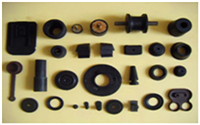Guangdong Yuanlin New Materials Co., Ltd
Contact person: Mr. Gu
Mobile phone:13826960299
Contact person: Li Yongfeng
Mobile phone:18128036097
Telephone:0769-88319157
Fax:0769-88319159
E-mail:gogothomas421@gmail.com
Address:No. 10, Shangye Road, Changping Village, Daojiao Town, Dongguan City
Kaolin performance
Ductility refers to the characteristic of the original mineral purple sand produced by the fusion of porcelain clay and water, which can deform under external forces. After the removal of external forces, it can still maintain this type of deformation, which is called ductility. Ductility is the fundamental and key processing performance indicator for the forming and processing of porcelain clay in porcelain bodies. The ductility index value and ductility index value are generally used to indicate the size of ductility. The ductility index value refers to the liquid limit water content of the porcelain clay raw ore purple sand minus the plastic limit water content, expressed as a percentage, that is, the W plasticity index=100 (W liquid degree - W plastic deformation degree). The ductility index value means the forming characteristics of the porcelain clay raw ore purple sand. The load and deformation size of the clay ball during force crushing can be measured immediately using a plasticity meter, expressed in kg · cm. Generally, the higher the ductility index value, the better its forming characteristics. The ductility of porcelain clay can be divided into four levels.
Fusion refers to the property of porcelain clay tightly combined with non plastic deformation raw materials to produce ductile clay and possess a certain dry and compressive strength. The measurement of fusion working capacity is to add standard quartz sand into porcelain clay (its quality composition is 0.25-0.15 particle size distribution accounting for 70%, and 0.15-0.09mm particle size distribution accounting for 30%). Due to its ability to maintain the maximum sand content of plastic clay and its flexural strength after drying, the larger the amount of sand added, the stronger the fusion ability of this type of porcelain clay. Generally, porcelain clay with strong ductility also has strong fusion work ability.
Viscosity refers to the feature that the liquid interior blocks its relative fluidity due to its rolling friction effect. Its size is indicated by viscosity (the internal sliding friction effect on the total area of 1 enterprise). The enterprise is Pa.s. The measurement of viscosity generally uses a rotary viscometer to consider the rotational speed ratio in porcelain clay slurry containing 70% solid content. In the production process, viscosity has critical practical significance. It is not only a key parameter of ceramic technology, but also a significant hazard to the paper industry. According to the material description, overseas use of porcelain clay as building coatings requires a viscosity of about 0.5Pa · s when applying at low speeds, and less than 1.5Pa · s when applying at high speeds.
Compressibility refers to the characteristics of the slurry that has long been thickened into colloidal form and will not flow again, and then becomes liquid after bearing the force, and then slowly thickens to its original appearance after being stationary. Indicate its size with a thickening index, and measure it using a discharge viscometer and a capillary viscometer.
The viscosity and Compressibility are related to the mineral composition, particle size distribution and the type of positive ions in the mortar. In general, Diosmectite has more components, fine particles, and exchangeable positive ions are dominated by sodium. Its viscosity and thickening index are high. Therefore, in processing technology, it is common to increase the viscosity and Compressibility by adding clay with strong ductility and improving particle size, and reduce it by improving Paint thinner electrolyte solution and water content.
Calcination refers to the characteristic of spontaneously filling the particle gaps with chemical substances and densification when the formed solid powder like porcelain clay body is heated close to its melting point (generally exceeding 1000 ℃). The situation where the porosity decreases to the lowest limit and the relative density reaches the highest value is called the calcination situation, and the corresponding temperature is called the calcination temperature. When heating again, the efficient liquid phase in the specimen continues to increase, and the specimen gradually deforms. At this time, the temperature is called the conversion temperature. The distance between the calcination temperature and the conversion temperature is called the calcination category. The calcination temperature and calcination range are the key main parameters for determining the secret recipe of raw materials and selecting the types of industrial kilns in ceramic technology. The test material should have a low calcination temperature and a wide calcination range (100-150 ℃). In terms of processing technology, the calcination temperature and calcination range can be controlled by mixing different types of porcelain clay according to their proportions.
Firing retraction refers to a series of physical transformations (dehydration effect, Decomposition, transformation into zirconium corundum, melting of fusible residue into Laminated glass phase to fill the gap between Simple harmonic motion, etc.) during the whole process of firing of dried porcelain clay embryo, which results in product retraction characteristics, including line retraction and body retraction. Just like the dry and impulsive folding, the firing folding is very large, which is very easy to cause the billet to crack. In addition, during roasting, if there is a lot of quartz stone in the embryo material, it will undergo a crystal structure transformation (tripartite to hexagonal), causing its volume to swell and also causing reverse folding.
